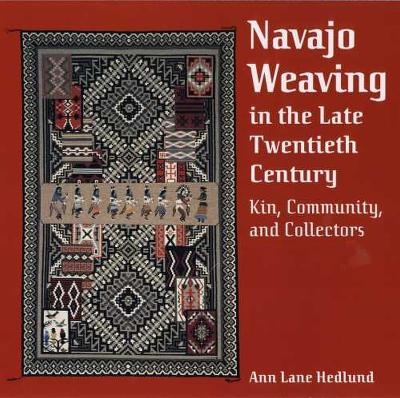
NAVAJO WEAVING IN THE LATE TWENTIETH CENTURY
Seiten
2004
University of Arizona Press (Verlag)
978-0-8165-2412-9 (ISBN)
University of Arizona Press (Verlag)
978-0-8165-2412-9 (ISBN)
According to the Navajos, the holy people Spider Man and Spider Woman first brought the tools for weaving to the People. Over the centuries Navajo artists have used those tools to weave a web of beauty a rich tradition that continues to the present day. In testimony to this living art form, this book presents 74 dazzling color plates of Navajo rugs and wall hangings woven between 1971 and 1996. Drawn from a private southwestern collection, they represent the work of sixty of the finest native weavers in the American Southwest. The creations depicted here reflect a number of styles revival, sandpainting, pictorial, miniature, sampler and a number of major regional variations, from Ganado to Teec Nos Pos. Textile authority Ann Hedlund provides an introductory narrative about the development of Navajo textile collecting including the shift of attention from artifacts to art and a brief review of the history of Navajo weaving. She then comments on the shaping of the particular collection represented in the book, offering a rich source of knowledge and insight for other collectors.
Explaining themes in Navajo weaving over the quarter-century represented by the Santa Fe Collection, Hedlund focuses on the development of modern rug designs and the influence on weavers of family, community, artistic identity, and the marketplace. She also introduces each section of plates with a description of the representative style, its significance, and the weavers who perpetuate and deviate from it. In addition to the textile plates, Hedlund's color photographs show the families, landscapes, livestock, hogans, and looms that surround today's Navajo weavers. Navajo Weaving in the Late Twentieth Century explores many of the important connections that exist today among weavers through their families and neighbors, and the significant role that collectors play in perpetuating this dynamic art form. For all who appreciate American Indian art and culture, this book provides invaluable guidance to the fine points of collecting and a rich visual feast.
Explaining themes in Navajo weaving over the quarter-century represented by the Santa Fe Collection, Hedlund focuses on the development of modern rug designs and the influence on weavers of family, community, artistic identity, and the marketplace. She also introduces each section of plates with a description of the representative style, its significance, and the weavers who perpetuate and deviate from it. In addition to the textile plates, Hedlund's color photographs show the families, landscapes, livestock, hogans, and looms that surround today's Navajo weavers. Navajo Weaving in the Late Twentieth Century explores many of the important connections that exist today among weavers through their families and neighbors, and the significant role that collectors play in perpetuating this dynamic art form. For all who appreciate American Indian art and culture, this book provides invaluable guidance to the fine points of collecting and a rich visual feast.
Ann Lane Hedlund is Director of the Gloria F. Ross Center for Tapestry Studies and curator of ethnology at the Arizona State Museum. Her books include Reflections of the Weaver's World, Contemporary Navajo Weaving: Thoughts that Count, and Beyond the Loom: Keys to Understanding Early Southwestern Weaving.
| Erscheint lt. Verlag | 30.10.2004 |
|---|---|
| Verlagsort | Tucson |
| Sprache | englisch |
| Gewicht | 1025 g |
| Themenwelt | Kunst / Musik / Theater |
| Sachbuch/Ratgeber ► Freizeit / Hobby ► Handarbeit / Textiles | |
| Sozialwissenschaften ► Ethnologie ► Völkerkunde (Naturvölker) | |
| ISBN-10 | 0-8165-2412-2 / 0816524122 |
| ISBN-13 | 978-0-8165-2412-9 / 9780816524129 |
| Zustand | Neuware |
| Haben Sie eine Frage zum Produkt? |
Mehr entdecken
aus dem Bereich
aus dem Bereich
Buch | Softcover (2024)
Edition Michael Fischer (Verlag)
15,00 €
über 70 Geheimtipps für entspanntes Stricken
Buch | Softcover (2024)
Stiebner (Verlag)
20,00 €
einfach, schnell und mit wenig Material
Buch | Softcover (2024)
Frech (Verlag)
10,99 €


